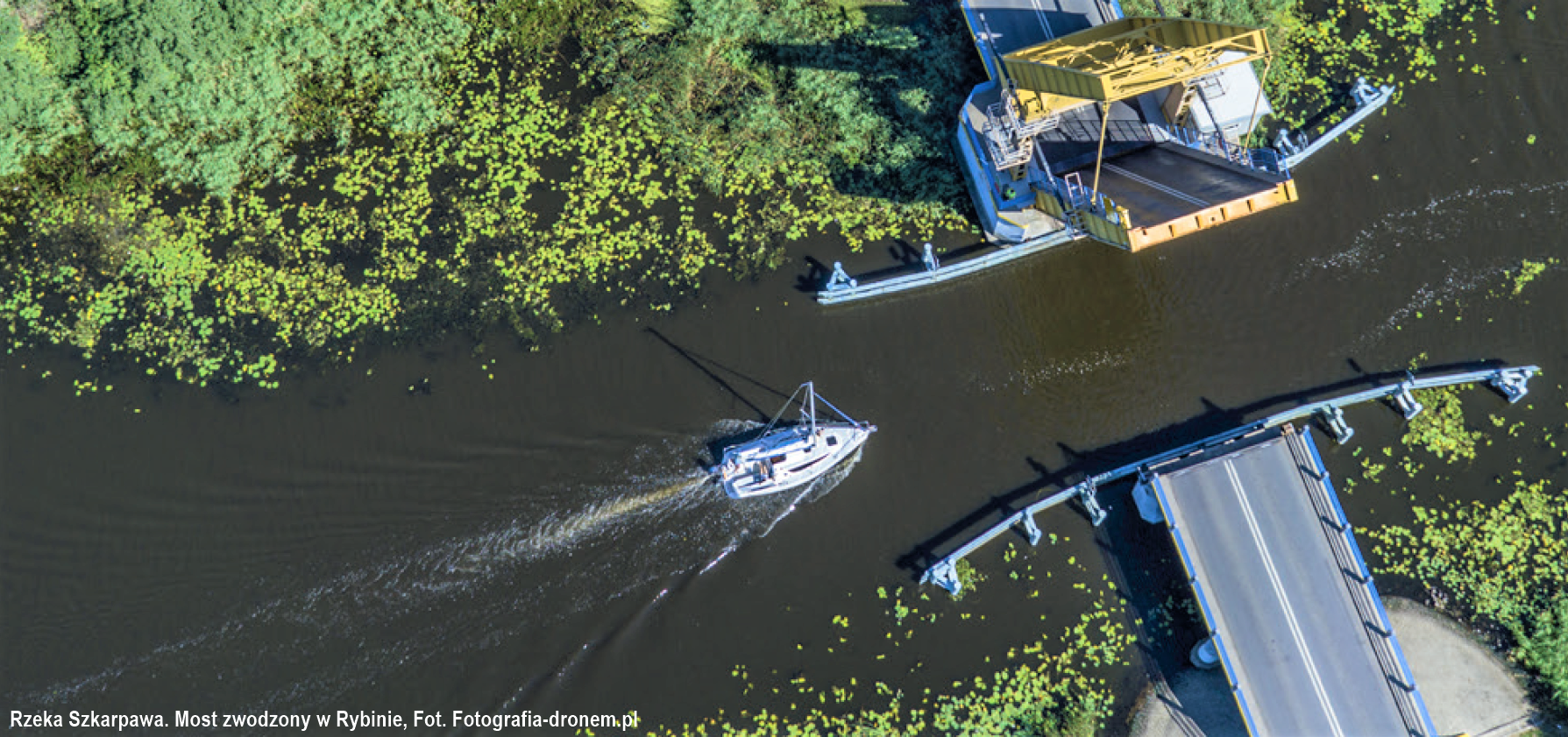The Szkarpawa flows to the east and is one of the estuary arms of the Vistula (931 km) that allows inland waterway access from Gdańsk do Elbląg. It is currently separated from the Vistula by the Gdańska Głowa lock. It is 25.4 km long and its two arms flow into the Vistula Lagoon. At 15.3 km begins the Wisła Królewiecka that flows north of the main current of the Szkarpawa.
The navigable route is 30 m wide but the river overflows in some places and turns up to 100 m wide. The Szkarpawa is an attractive body of water in terms of both picturesque landscape and tourism. Numerous meanders within the Żuławy Plain make sailing more interesting and provide a truly aesthetic experience throughout the entire adventure. Flat banks, overgrown with rushes turn in time into high floodbanks protecting fertile depressions. There are three drawbridges over the Szkarpawa and one – truly unique – railway swing bridge.
NAVIGATION INFORMATION
Depth. The Szkarpawa is a class II waterway, with a guaranteed depth of 1.6 m, however, along the designated navigable route it is usually deeper and rarely falls below 2 m.
Power lines. There are several power lines over the Szkarpawa, the lowest one being suspended over 14 m above the water level.
Bridges. All the bridges along the route are drawbridges or swing bridges. The staff opens them at designated hours and sometimes on request. When attempting to pass under a closed bridge, keep in mind that the water level can change very rapidly (up to 1 m in a very short time) – this phenomenon is caused by backwater from the Vistula Lagoon.
Lock. There is only one lock on the route – the Gdańska Głowa lock. It is 12.5 m wide and 61 m long.
Vegetation. The current on the Szkarpawa can barely be detected, thus it favours the growth of aquatic vegetation. Similarly to the Nogat, you can see thick carpets of Salvinia natans (floating fern). Therefore, try to navigate through the middle of the route to avoid clogging the cooling system or having the vegetation tangled in the propeller.
Mooring. There are several designated mooring spots, e.g. in Drewnica, Żuławki, Rybina, Osłonka. You can also moor using natural bays formed between reeds.
